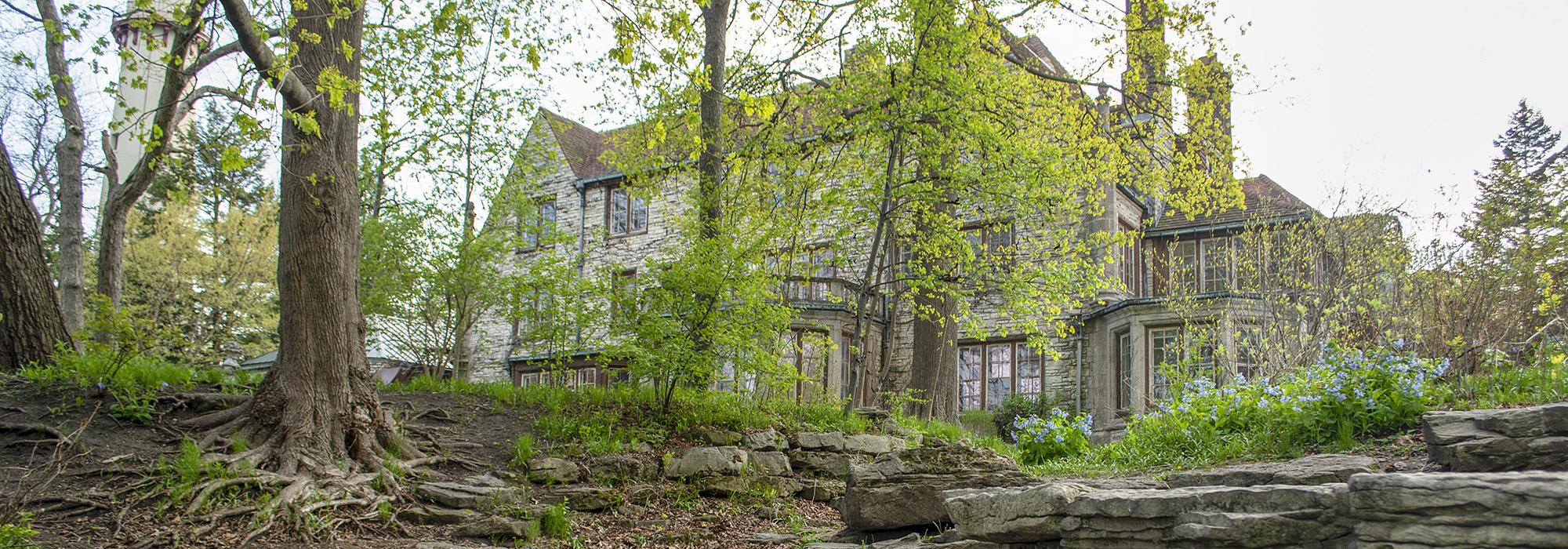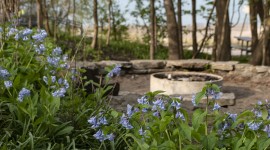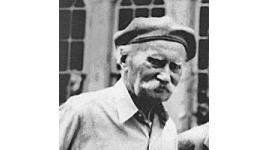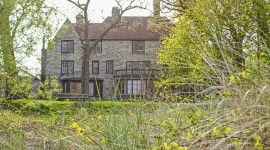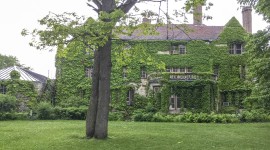A Rare Jensen-Caldwell Landscape Faces Threat
Built in 1927, the Harley Clarke house in Evanston, Illinois, is a celebrated work of architecture set within a landscape designed by Jens Jensen and his protégé Alfred Caldwell. Owned by the City of Evanston and left vacant for several years, the mansion now faces impending demolition, which would leave an orphaned and illegible landscape that should instead be restored and maintained along with the historic structure. And yet a community-backed plan to save the landmarked property—at no expense to taxpayers—is being rejected by the Evanston City Council.
HISTORY
Occupying 4.7 acres on the shore of Lake Michigan in northeast Evanston, Illinois, the Harley Clarke house was designed in the English Tudor style by Chicago architect Richard Powers in 1927 as a private residence for Harley Lyman Clarke, president of the Utilities Power & Light Corporation. In April 1928 renowned landscape architect Jens Jensen, a progenitor of the uniquely North American aesthetic known as the Prairie Style, was hired to design the landscape for the property. Jensen brought along his protégé Alfred Caldwell to supervise the work. The two men had previously collaborated on the design for the grounds of Clarke’s vacation home, Clear Sky Lodge, on the southern shore of Geneva Lake in Wisconsin. Built of rough-faced limestone, Clarke’s Evanston mansion featured sixteen rooms, including an iron-and-glass conservatory, all punctuated by six intricate chimneys. The home, adjacent to Grosse Point Lighthouse, has an abundance of east-facing windows that afford scenic views of a sloping dune and Lake Michigan.
The landscape incorporates many features from the Prairie Style aesthetic that both Jensen and Caldwell championed, while being attentive to the context of the site. Expanses of lawn were oriented to afford views from the residence, particularly of the dunes and Lake Michigan to the east, while stone terraces and walkways linked a series of outdoor rooms demarcated by thickets of ornamental shrubs. Jensen planned a border of flowering prairie plants to the north of the property; the repetitive prairie was broken up by shrubs and dogwoods, while hawthorns and crabapples were scattered along the curving driveway linking Sheridan Road to the house. A planting of prairie rose anchored the eastern edge of the property where it met the lakeshore, and a grove of hemlocks was included on the southern edge of the property to provide shade for a stone grotto and the home’s attached conservatory while screening the property from the adjacent Grosse Point lighthouse. While the landscape has been altered over time, the hemlock-shaded grotto, the council ring, and many terraces and pathways survive today, as do portions of the original plantings.
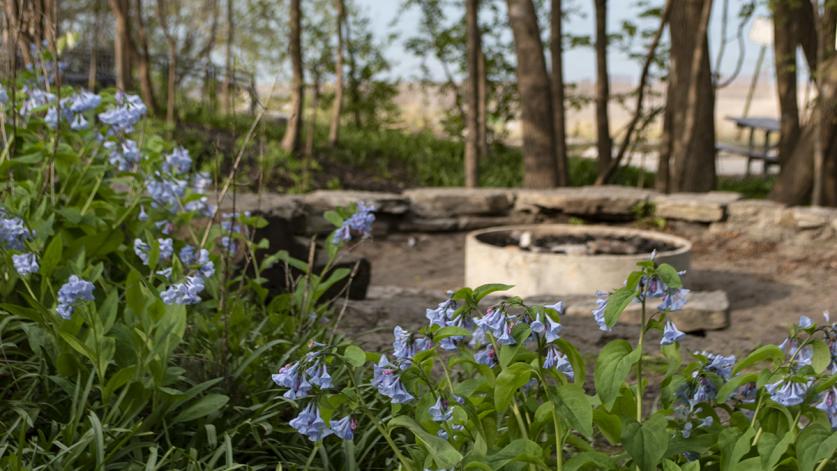
Jensen’s projects reflect his constant efforts to relate forms and materials to the surrounding native landscape. His use of color, texture, and gradations of light evokes emotional responses. A social reformer, Jensen was committed to humanizing what he perceived to be an increasingly industrial environment. Following in the footsteps of his mentor, Alfred Caldwell would go on to a brilliant career of his own and would be known as America’s last great Prairie School landscape architect.
The stately Harley Clarke house was the last grand residence built in Evanston before the devastating stock market crash of 1929. Clarke and his family left Evanston in 1949, and the home was soon sold to the Sigma Chi fraternity, which used the property as its national headquarters from 1951 to 1965. Ownership then passed to the City of Evanston as part of the development of Lighthouse Landing Park, and the property was leased to the Evanston Art Center for some 50 years, until 2015. During that period, the Evanston Garden Club maintained much of the Jensen landscape. In 2011 the city began exploring alternative uses for the property, turning down a 2013 proposal to convert it to a privately owned boutique hotel. In November of 2016, the city formed the Harley Clarke Planning Committee to help determine the future of the historic site. That same year, the Chicago office of Wiss, Janney Elstner completed a physical assessment of the Harley Clarke house at the request of Landmarks Illinois and reported that the mansion remains structurally sound. The property has been designated an Evanston Landmark and is a contributing feature of the Northeast Evanston Historic District, listed in the National Register of Historic Places in 1999.
THREAT
The Harley Clarke house has been vacant since 2015, when the Evanston Arts Center’s lease on the property expired. In November 2017, the non-profit Evanston Lakehouse & Gardens (ELHG) submitted a response to the city’s Request for Proposal # 17-48, outlining a plan for the adaptive reuse of the property as an environmental education center, including a rehabilitation of the mansion and a restoration of the historic landscape by Jens Jensen and Alfred Caldwell. The ELHG’s stated mission is to “restore and preserve the Harley Clarke house and Jens Jensen gardens by creating an inspiring community space that fosters appreciation of the environment and the rich cultural history of Evanston.” Although the plan was endorsed by the Harley Clarke Planning Committee, it was ultimately rejected by the City Council in a 7-2 vote in April 2018. At a City Council meeting on May 29, Eighth Ward Alderman Ann Rainey asked the Council to consider a proposal from Evanston Lighthouse Dunes, a group of private citizens offering to pay for the demolition of the mansion. On June 18, the Council approved a resolution authorizing the city manager to meet with the group, which says it will restore the lakefront dunes while sparing the Jensen gardens from destruction.
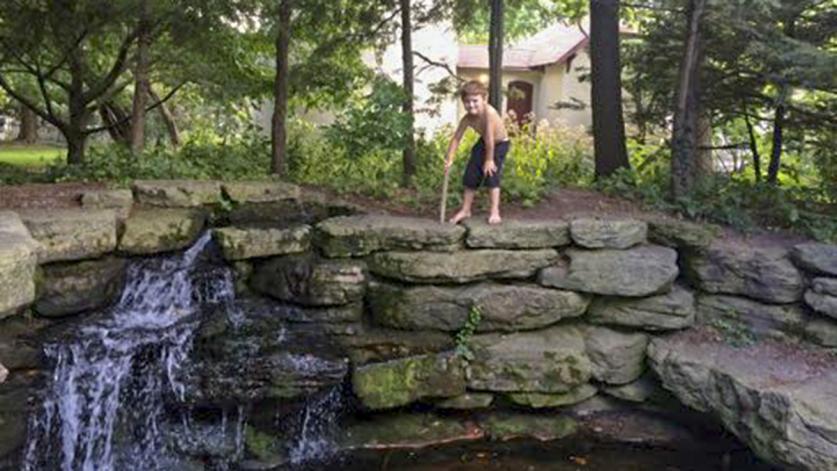
But the landscape was carefully designed to be experienced in tandem with the architecture, without which the design would be completely illegible. Moreover, the proposal to demolish the mansion does not include funds to subsequently maintain the landscape, whose upkeep would fall once more on strained city coffers. Materials provided by the City of Evanston in the June 18 City Council packet contained an estimate for tree-trimming and removal, including the hemlocks to the south of the house, part of the original Jensen landscape design.
The Evanston city manager has indicated that the annual cost to maintain the mansion is $15,000. ELHG, which is not seeking any taxpayer dollars in support of its plan, is proposing to pay the City of Evanston $15,000 in exchange for a one-year option agreement to secure $1 million in pledges towards the proposed project. The $15,000 would offset the annual maintenance costs for the Harley Clarke house during the one-year period, and the agreement would include a provision granting ELHG a long-term lease of the property if it is successful in reaching its larger fundraising goals. Many donations and pledges have been received in advance of the agreement. Despite this proposal, the City Council is now pursuing the alternative plan to demolish the mansion and may soon reach its decision.
WHAT YOU CAN DO TO HELP
Sign a petition to add your voice to others calling to halt the demolition of the Harley Clarke house, or contact the members of the Evanston City Council and urge them to step back from demolition and take more time to find a solution to save the house and gardens.
Mayor Stephen H. Hagerty (e-mail)
Judy Fiske (Ward 1; e-mail)
Peter Braithwaite (Ward 2; e-mail)
Melissa A. Wynne (Ward 3; e-mail)
Donald N. Wilson (Ward 4; e-mail)
Robin Rue Simmons (Ward 5; e-mail)
Thomas M. Suffredin (Ward 6; e-mail)
Eleanor Revelle (Ward 7; e-mail)
Ann Rainey (Ward 8; e-mail)
Cicely L. Fleming (Ward 9; e-mail)
Tom Hodgman is a native of Evanston and president of the Board of the non-profit Evanston Lakehouse & Gardens.



